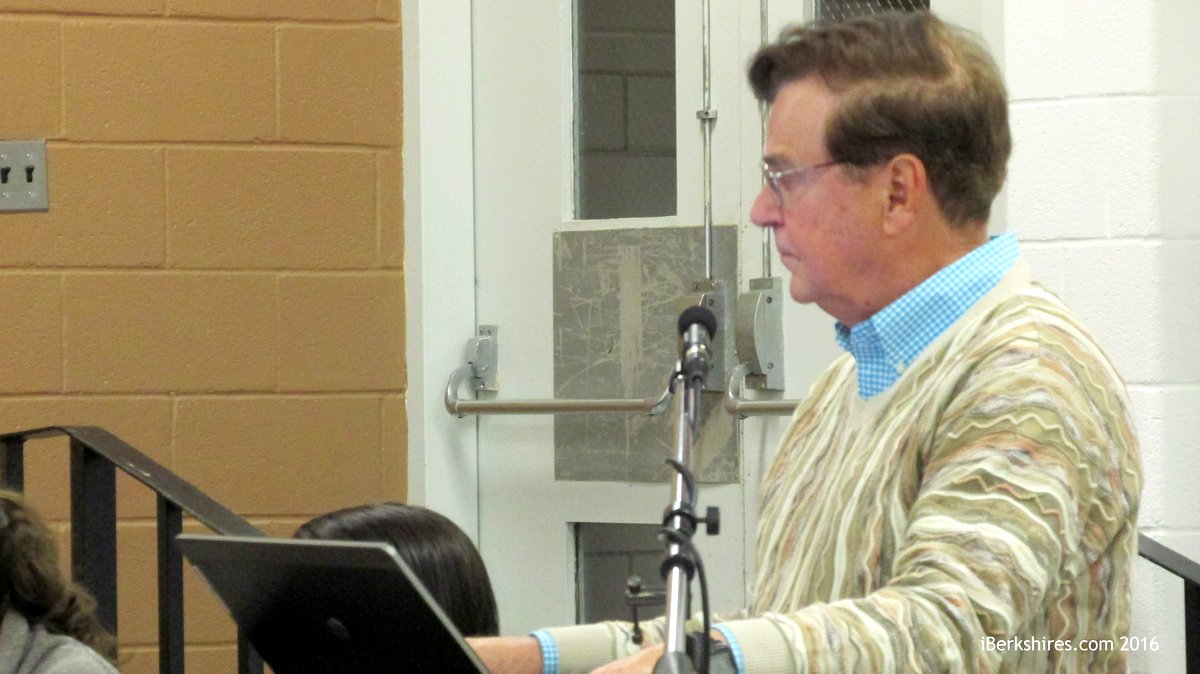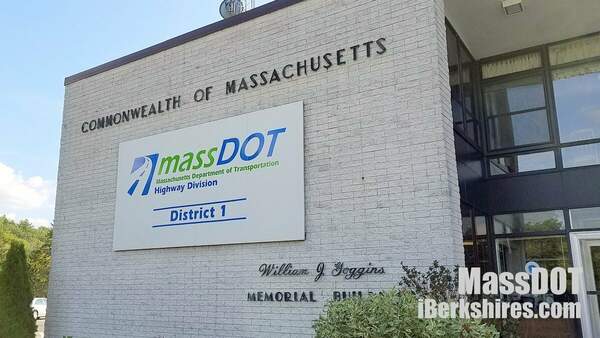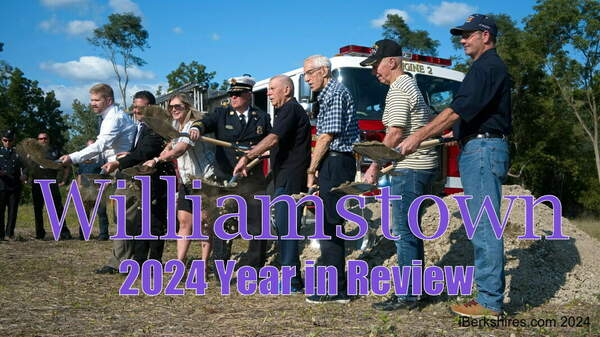
Mount Greylock School Committee Favors Early Principal Payment for Building Bond
WILLIAMSTOWN, Mass. — A divided Mount Greylock School Committee on Tuesday decided to start making principal payments on the bond for the school building project in the first year of borrowing.
The decision follows the advice of the Finance Committees in both towns of the two-town regional school district and will result in higher assessments to each town in the first two years of the anticipated 29-year life of the bond.
Although the district has yet to issue a bond for the $64.8 million addition/renovation project, it anticipates doing so in calendar year 2016, which means it needs to be included in the fiscal 2017 assessments to Williamstown and Lanesborough, which will vote their appropriations at annual town meeting, in May and June, respectively.
On Tuesday, the School Committee faced a choice of two strategies to service the debt: paying interest only in the first few years or paying a combination of principal and interest.
According to estimates compiled by the School Building Committee's finance working group, the former strategy would have resulted in a $1.1 million bill in FY17. According to the recently amended regional agreement, that would have meant a $362,000 bill for Lanesborough and a $788,000 bill for Williamstown.
The more aggressive interest plus principal option would result in an estimated $1.8 million payment by the district, which will be assessed $561,000 to Lanesborough and $1.2 million to Williamstown.
The finance working group compiled those estimates after consultation with the district's bonding agent, explained Dick Jette, a community member who assists the working group.
"Eventually, we will come back to the School Committee when we're further along, probably in September, approximately a month before we're ready to issue the bond to explain the process," Jette said. "The decision the committee needs to make is whether you want to appropriate enough to cover interest versus the additional amount for principal.
"Basically, we haven't issued the bonds yet, so we can work with either number. It's the preference of the communities as to how quickly they want to start applying money toward debt service and have that impact their town budgets."
The chairman of Lanesborough's Finance Committee and Williamstown's town manager attended Tuesday's meeting to inform the School Committee of the Finance Committee votes in each town.
In spite of those panels' support of the principal plus interest approach, two members of the School Committee expressed reservations about the more aggressive debt service plan.
Richard Cohen and Chris Dodig, both of Lanesborough, voted in favor of the interest-only approach, a motion that was defeated, 4-2. A subsequent motion to assess the towns based on the principal-plus-interest plan passed 4-1-1 with Dodig voting against and Cohen abstaining.
Cohen and Dodig both pressed Jette for a projection of when the towns would begin to break even with the more aggressive approach.
Although the assessments would be roughly the same under either scenario in FY18 and the towns would pay more under the interest-only scenario as soon as Year 3 (FY19), the projections from the SBC's finance working group show that even after four years, the principal-plus-interest approach will have a higher cumulative effect on local tax bills.
Assuming that the current projections hold up, the total appropriations from FY17 through FY20 would be $7.23 million under Plan A (interest only) and $7.63 million under Plan B (interest plus principal).
Cohen and Dodig acknowledged that eventually the towns will save money under Plan B, which is why both Finance Committees favored it. But the two School Committee members wanted to know when.
"The payback period probably isn't for eight or nine or 10 years," Cohen said. "A payback period of eight or nine years doesn't seem advantageous for a building with a useful life of 50 or 60 or hopefully more."
Cohen compared the decision before the School Committee to that of a homeowner deciding between paying points on a mortgage versus financing more of the purchase and pointed out that, with inflation, the money spent on the district's "mortgage" in years eight, nine and 10 will not be worth as much as the money it spends in FY17.
"Having some of that burden shifted to future generations … has a logic to it," he said. "It's the basic logic of mortgages."
Cohen also had a less esoteric reason for favoring the less aggressive approach to debt service.
He noted that in the run-up to the recent debt exclusion votes in each town, voters were told that there would be a ramping up of the debt payment — that the tax impact would grow over time.
"If people perceive that there was a bait and switch — and I don't think there was — we want to make sure we have credibility because we'll go back to the towns for many years for additional expenses, both operating and capital expenses," Cohen said. "We have to weigh the risk of doing something after the vote that is different from what we talked about before.
"We have to make sure that whatever savings there are are enough to justify the change."
Jette said he did not dispute Cohen's analysis that the payback would not come for several years. He said the finance working group and UniBank Financial Advisory Services had not yet run the analysis over the entire life of the bond, so a figure for the full savings is not available.

School Committee Chairwoman Carolyn Greene noted that the tax impact of the interest-plus-principal Plan B is within the projected range the committee presented in the months leading to the debt exclusion vote.
Cohen still questioned why the choice between Plans A and B was coming to the School Committee at this point in the process.
"Can I ask why we're doing this now and we didn't know before the votes in the towns?" he asked.
"This research was in process back in January," Greene said. "Should this have come up for discussion in the School Committee? Yes, it would have been great if we had had the bandwidth to discuss these things back then. We need to go forward with the information we have now.
"In a perfect world, we'd be able to make all the decisions in a sequence that makes sense. But we're dealing with deadlines for town meeting."
Steven Miller, Gary Fuls and Sheila Hebert joined Greene in voting for Plan B, the interest-plus-principal approach.
"I was torn between the two options," Miller said. "But the fact that both Fin Comms were in favor of [Plan B] swayed me."
School Building Committee Chairman Mark Schiek was also before the School Committee on Tuesday to seek its approval of contracts with the professionals who are working on the addition/renovation and to talk about logistics of how the bills will be paid as the project moves forward.
The School Committee agreed on a 5-1 vote to extend the contract with owners project manager Dore & Whittier of Newburyport. The majority agreed that the $1.83 million contract (including $150,000 already spent during the feasibility and schematic design phase) is reasonable.
Schiek told the committee that Dore & Whittier's share of the total project cost will be about 3.5 percent, which is commensurate with similar projects in the commonwealth.
Dodig asked Schiek whether the district had tried to negotiate that figure down and ultimately voted against approving the contract.
"I don't really care that the state says 3.5 percent is where we should be," Dodig said. "That seems high to me for this service. It seems like a high number for the service we're getting from them.
"It better be a full-time job for a bunch of people for three years for that much money. I would challenge the state and say that's too high for a project manager. I don't know that it's something we can change at this point. It seems like an area where we might have been able to save, but I do understand that's typical."
Dodig joined his colleagues in voting 6-0 to approve a $4.7 million contract for architect Perkins Eastman. Schiek noted that the combined budget for the OPM and architect is about 13.5 percent of the total project budget, which compares favorably with the 15.6 percent spent on those services by a recent project in the Ayer-Shirley School District, a project sometimes compared to Mount Greylock's.
The School Committee also unanimously OK'd a $165,000 purchase order for construction management firm Turner Construction. The 10-month purchase order will allow Turner to work on the preconstruction phase of the project while the district negotiates a full contract, Scheik said.
Schiek and the School Committee began a discussion Tuesday about establishing spending authority for the School Building Committee during the construction phase. The SBC had spending authority during the project's initial phases, but such authority will be even more important going forward in order to keep the project on track.
District counsel Fred Dupere, who was present to talk to the board on another matter, weighed in on the advisability of such an arrangement.
"I just had this conversation with another district in the last couple of weeks," Dupere said. "I asked them how much they were talking about, and they said millions of dollars. It would hold up the project to wait for the School Committee to give approval. But the School Committee needs to be aware of what's going on … so if something was untoward, you could step in at that point.
"It can't wait for a monthly meeting of the School Committee for [bills to be paid]."
Schiek told the committee that the construction team is hoping to accelerate the schedule for the project, completing asbestos abatement in the Phase 1 area before the start of school in September. This summer, the first signs of a building project will begin popping up on campus, with the erection construction site fencing, the creation of a new bus loop and the relocation of offices and classes in the Phase 1 area — between the gymnasium and auditorium.
Tags: bonding, debt service, MGRHS school project,















